A few weeks ago I walked up to a fruit cart just off Saigon's Dong Khoi St, one of the main tourist streets, and started clicking away. The cart was unattended. I was only interested in the fruit anyway.
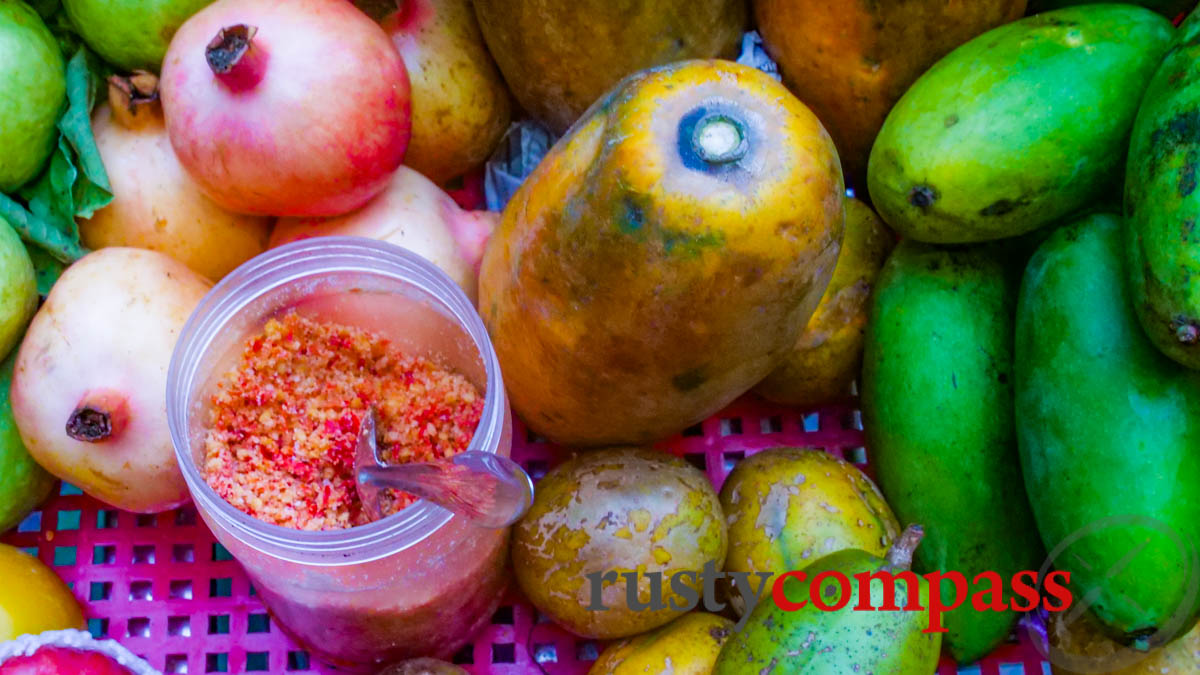
Photo: Mark Bowyer The fruit stall that caused a fracas
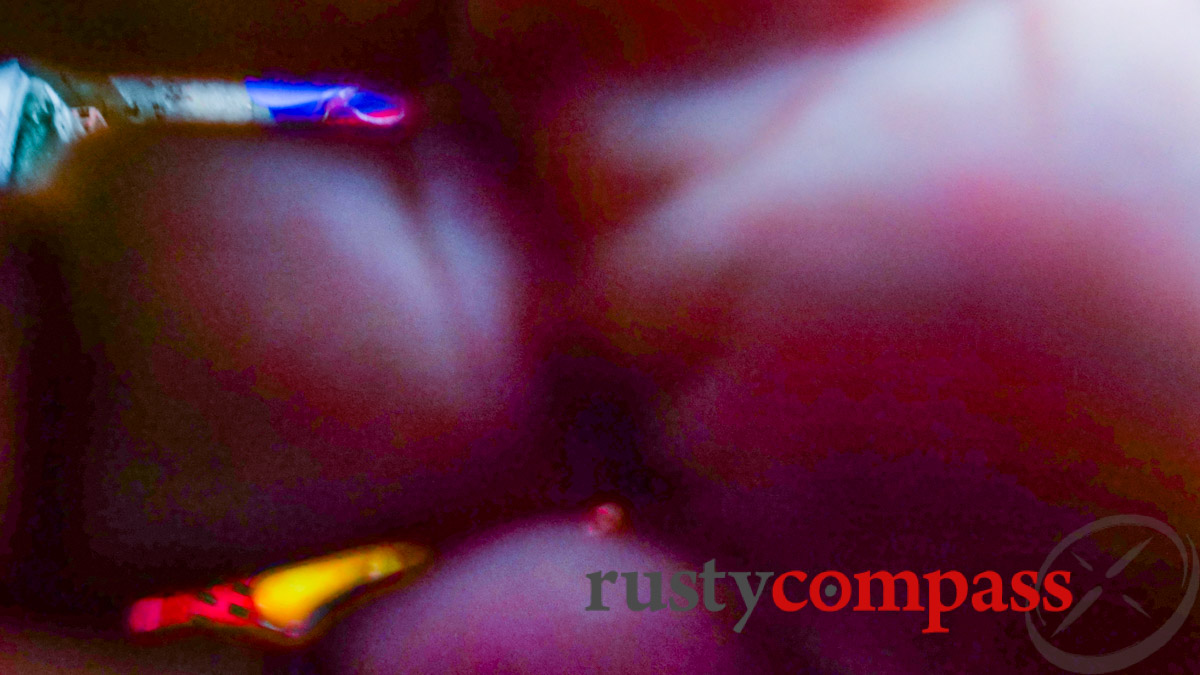
Photo: Mark Bowyer The hand that grabbed my camera
Suddenly a woman forced her hand over my lens screaming “dung chup” - which means “don’t photograph". She was the owner of the cart it seems, and she was unhappy. After she manhandled my camera, I was pretty unhappy too. She wanted money from me for the right to photograph her fruit cart.
I accept that taking portraits of unwilling subjects is uncool. Taking photos of an unattended fruit cart in the centre of a big busy city is a different proposition. But this woman was having none of it.
I’ve been photographing Vietnam and Vietnamese people as an enthusiastic amateur for almost three decades. It's been one of the joys of being in this country. In my experience, the locals have been wildly accommodating, friendly and receptive to those wanting to photograph them and their homeland. And I've tried to be respectful of their wishes, to engage with them and to learn about them. Taking photos of people has been a great way of starting conversations and getting to know Vietnam a little better - even before I was able to converse in Vietnamese.
But we Westerners who like to take photos of Vietnamese people tend to apply a different set of standards to those we would be required to observe (culturally and legally) in our home countries - especially with children. The focus of travel photography tends to be different in developing countries - especially the part about capturing people. It's not necessarily a bad thing - depending on the sensitivity of the photographer. But Westerners photographing locals on the streets here must acknowledge that we are applying different rules to those we would be forced to apply at home.
I find myself hearing Vietnamese people say “dung chup” (don’t shoot) with increasing frequency - even when photographing inanimate objects like old buildings or fruit carts. In some cases those objecting strike me as serial belligerents - like the fruit cart lady. They like saying no. Or they're hoping to score a quick buck from a foreigner.
In other cases, things are more complicated. Those objecting believe a photo will represent Vietnam in a bad light, or they simply don't want to be photographed. Very often the words “dung chup” are followed by “ngheo qua” - which means “very poor” - referring to the scene being captured. It happens on the streets of Hanoi’s Old Quarter and in Saigon far more than it happens in rural parts of the country.
So much of what we Westerners find interesting, unique and beautiful about Vietnam, is considered unflattering or a symbol of poverty by many Vietnamese - especially Vietnamese old enough to remember the hardship of war and dire poverty.
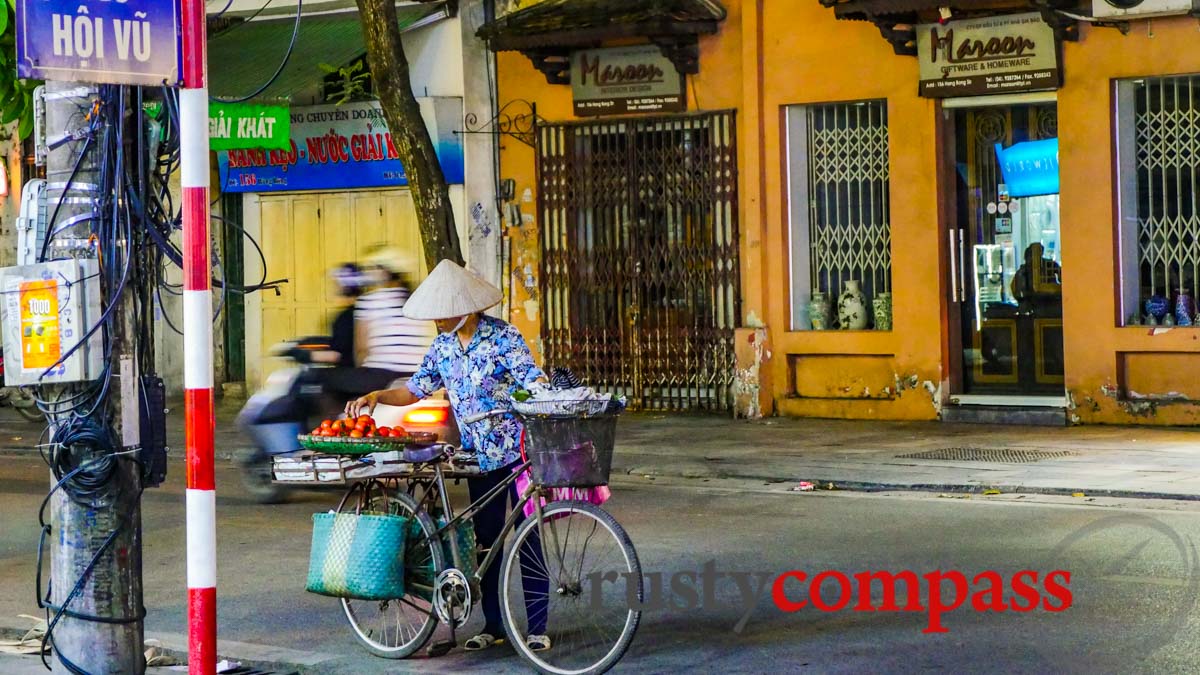
Photo: Mark Bowyer Hanoi or a tourist's imposition?
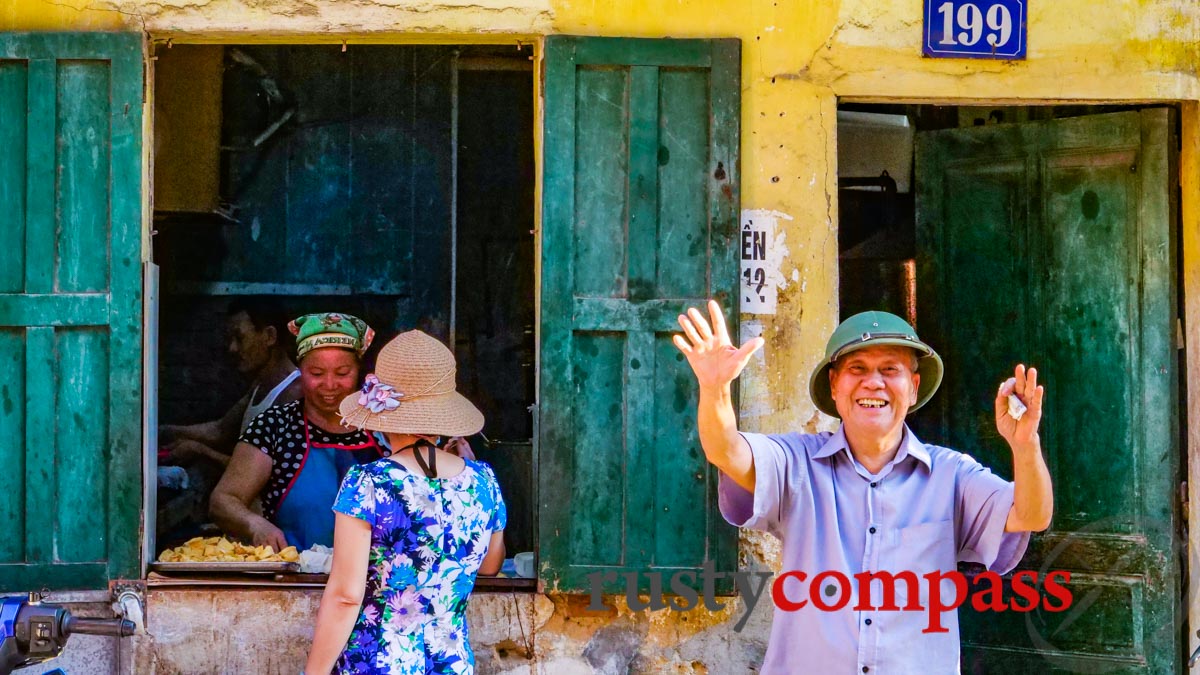
Photo: Mark Bowyer Haiphong welcome - a positive image? We think so.
People in big cities like Saigon and Hanoi are more exposed to tourists and it occurs to me that they are more exposed to the gaping inequality that has become a key feature of Vietnam's recent decades of rapid economic progress. Those who attract the interest of photographers in these cities are usually on the wrong end of the country’s growing inequality. That some of these people might be sensitive about being photographed makes perfect sense. They don't view themselves as the story.
We spend far less time photographing skyscrapers, BMWs, shopping malls and those in Louis Vuitton stores than we do fading colonial architecture, and women pushing bicycles with flowers, or delicately balancing fruit across their shoulders. Where we see beauty and a uniqueness, many of the participants, the subjects of our photography, see hardship and poverty.
A couple of weeks ago in Haiphong, the photogenic port city outside of Hanoi, I was photographing some wonderful fading typography when I heard a nearby security guard say, “Dung chup - cu qua, ngheo qua” which means - “Don’t shoot that, it’s old and poor”. He said it for the benefit of his colleague and didn’t expect me to understand. He was shocked when I responded.
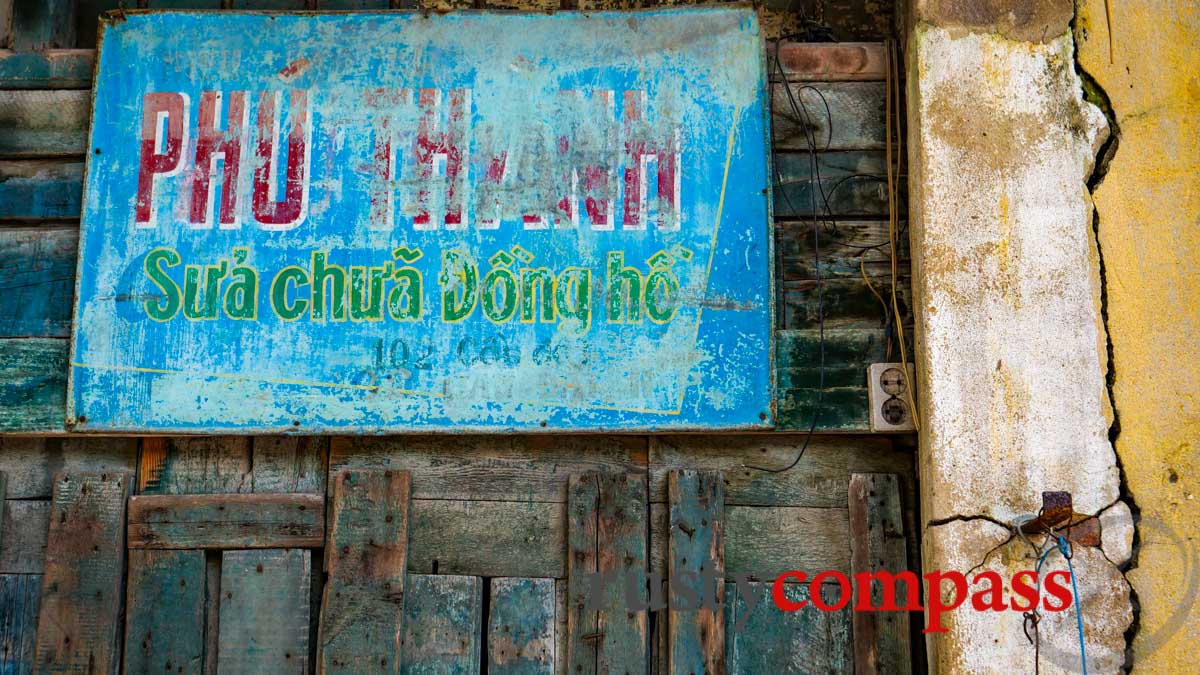
Photo: Mark Bowyer Old typography, Haiphong - Mr Khanh thought it wasn't deserving of a shot.
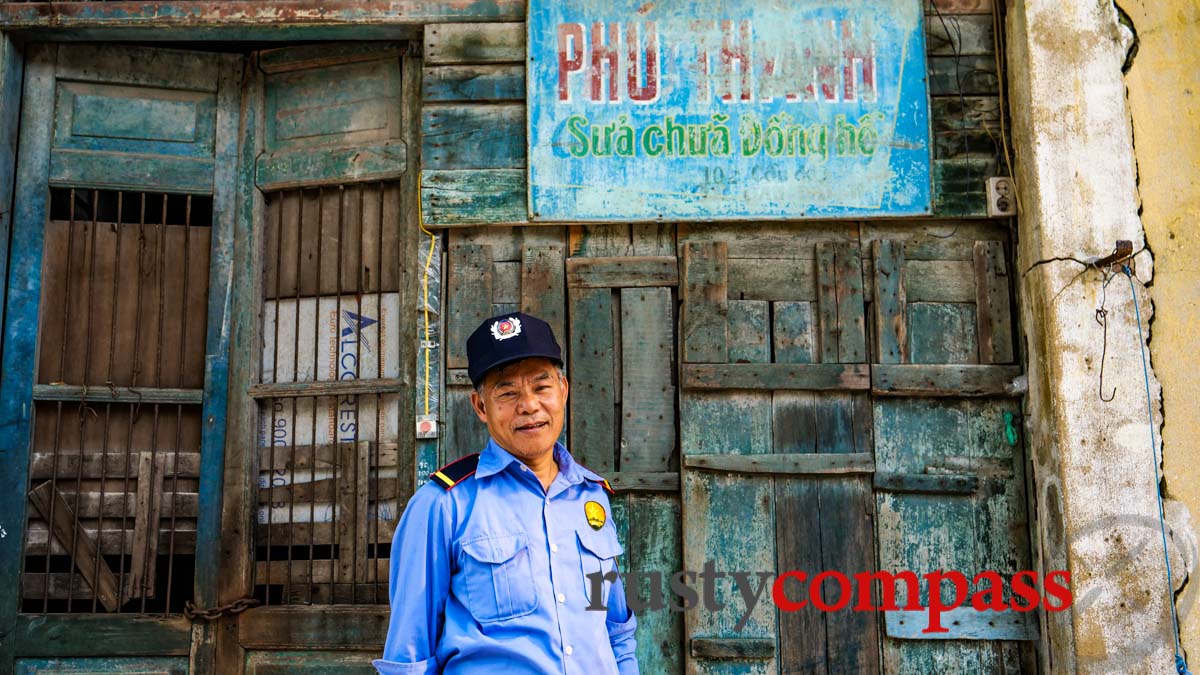
Photo: Mark Bowyer Mr Khanh - and the scene he didn't like at first.
Mr Khanh was his name and I told him that I think these old Haiphong buildings and the old Vietnamese typography are beautiful. He was surprised and told me he too was old and asked whether he was beautiful? I told him he was and he jumped into the frame (see above). He suddenly saw the old building and typography in a different light.
It was a satisfying end to our chat. And he came away with a better understanding of why Westerners are so intrigued by old buildings and typography. And I was reminded why many Vietnamese are ambivalent about our interest. I think Mr Khanh was a little chuffed to know that these ubiquitous symbols of his country are held so dearly by many foreigners.
The most important thing was the quality of our interaction. Once he knew I was respectful of him and genuinely appreciated what I saw, he was happy for me to take photographs and he wanted to be included.
Vietnam’s globalised younger generation like vintage things - so they understand the interest of foreign travellers in Vietnam's old streets and classic scenes. But many older Vietnamese - especially the people who experienced war and poverty first hand, can’t imagine why a foreigner would want to photograph old buildings, old people and ordinary people on the streets going about their daily business.
It partly explains Vietnam’s love of the new and the unseemly rush to obliterate the old across the country. Ask a xe om driver whether he prefers Saigon’s shiny new malls to the crumbling old French buildings and I’m pretty sure I can tell you how he’ll answer.
And many locals are simply tired of the attention from Western tourists wanting to populate their Instagram feed. They want to get on with their lives. And they were going about their lives on these streets long before they became packed with camera wielding tourists.
Then there are the tourists. Many are unpleasant and imposing. Obnoxious tourists who show no respect for local sensibilities shape the way locals respond to future visitors. And there are lots of obnoxious tourists.
But when I visit cities like Haiphong or Vung Tau, or rural parts of Vietnam rarely visited by Western tourists, I am reminded of the natural hospitality of the Vietnamese people.
It won’t always work, but being friendly and respectful with the locals is your best way to have a good experience of Vietnam - and you’ll probably get some good pics too. From my experience, that's the right order of things.





There are no comments yet.